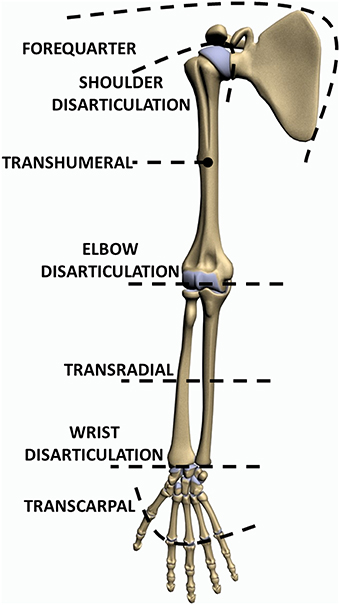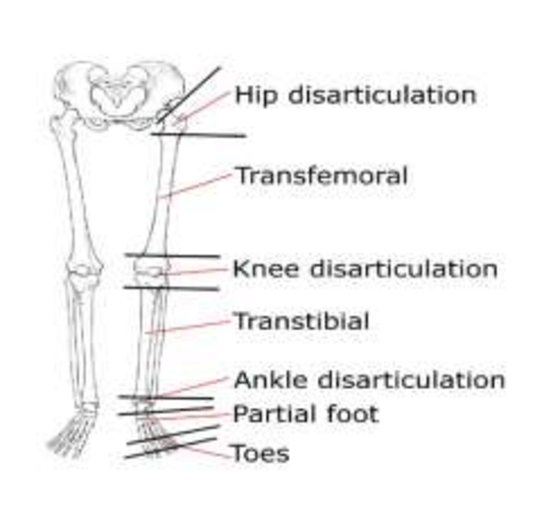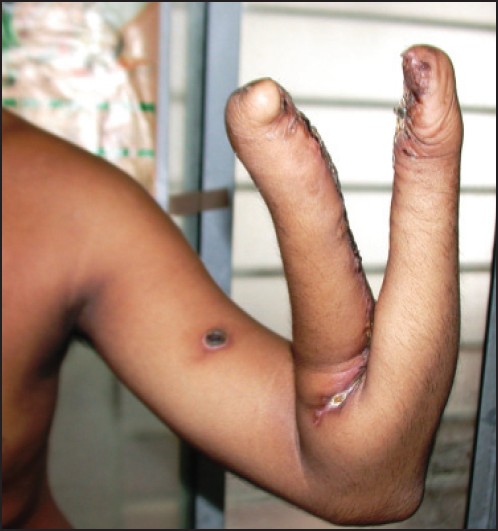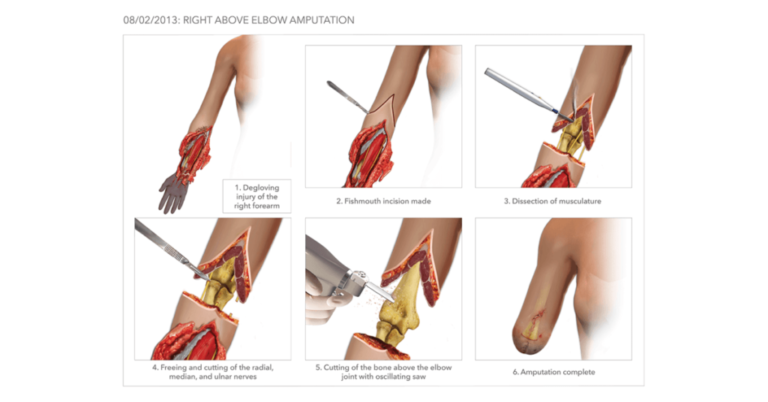Bone Graft
Table of Contents
Introduction
A Bone Graft is a surgical treatment used to repair bone or joint issues.
Bone grafting, or the transplantation of bone tissue, is useful in repairing bones that have been damaged by trauma or dysfunctional joints. It is also useful for regenerating bone around an implanted device, such as a total knee replacement, where bone loss or fracture has occurred. A bone transplant may be used to replace missing bone or to help give structural stability.
A bone transplant might be made from your own or donated bone, or it can be wholly synthetic. If accepted by the body, it can offer a foundation for new, living bones to grow.
Your surgeon inserts a fresh piece of bone into the area where a bone needs to be repaired or connected during a bone transplant. The cells in the newly formed bone are then able to attach to the cells in the old bone.
Bone grafting is frequently performed by surgeons as part of another medical treatment. For example, if you have a serious thighbone fracture, your healthcare professional may do a bone graft as part of other necessary bone repairs. Your doctor may make an incision in your hip to remove a little piece of your hip bone, which will be used to execute your graft.
Why is Bone grafting performed?
Bone grafting is performed for a variety of reasons, including injury and disease. Bone transplants are utilized for four main reasons:
- In the case of multiple or difficult fractures, or those that do not heal well after first therapy, a bone graft may be employed.
- Fusion is a technique that allows two bones to heal together across a damaged joint. The spine is the most commonly fused structure.
- Regeneration is utilized to replace bone that has been lost due to disease, infection, or injury. This can include using little pieces of bone in bone cavities as well as big chunks of bone.
- A graft can be used to aid in the healing of bone around surgically implanted devices such as joint replacements, plates, or screws.
Who requires a bone graft?
If bones do not heal properly after a fracture, this surgery may be required. You might come across the following:
- Delayed union: When bone healing (fusion) takes longer than predicted.
- Malunions are bones that heal in an abnormal position.
- Nonunion: When there is no bone fusion.
Another rationale for a bone graft is:
- Osteonecrosis and malignancy of the bones.
- Osteomyelitis is an infection of the bones.
- Birth abnormalities, such as uneven limbs or a small chin.
- Before obtaining a tooth implant, the jaw must be reinforced (dental bone transplant).
- Joint replacement surgery may necessitate bone development to anchor an artificial joint.
- Fusion of the spine.
- Trauma, such as severe fractures causes bone rupture.
Which type of bone graft would I need to have?
There are various bone grafting techniques available, including:
Allograft: This technique makes use of bone tissue from another person (donor). Tissue handling is strictly regulated in public health services, and bone tissue is cleansed and processed (sterilized) to assure the recipient’s safety. This graft is commonly used in spinal fusion surgery. It acts as a support for the formation of healthy bone tissue.
Autograft: An autograft is a bone tissue transplant that employs a sample of your bone tissue. Typically, the tissue is generated from the top of the hip bone (iliac crest). To retrieve the bone tissue, the surgeon makes an incision. The advantage of using your tissue is that it enhances the likelihood of successful fusion; however, the amount of bone tissue that may be gathered is restricted. You may also have soreness at the place where the bone graft is collected.
Aspirate of bone marrow: Marrow is the spongy tissue found inside bones. It involves stem and progenitor cells, which could assist with bone fracture healing. The surgeon extracts bone marrow from the hip bone (iliac crest) with a needle. This bone marrow aspirate is utilized to promote bone healing after allograft surgery, either alone or in combination with other bone transplants.
Synthetic bone graft: This sort of graft is manufactured from synthetic porous materials. Some contain proteins that aid in bone formation.
What are the risks of bone grafting?
Bone grafting is generally safe, however, there are certain uncommon hazards.
- Infection
- Bleeding
- A blood clot has caused nerve damage.
- Anesthesia complications
- Infection from donated bone (very rare)
Even with a bone graft, there is a chance that your bone will not heal properly. Many of your hazards will differ depending on the cause of your bone graft. These factors include whether you use donor tissue, your other medical issues, and your age. For example, if you smoke or have diabetes, your bone graft may not heal properly. Discuss all of your concerns with your healthcare professional, including the hazards that are most relevant to you.
How to Get Ready for Bone Grafting
Before your operation, your doctor will conduct a thorough medical history and physical examination. Make sure your doctor is aware of any prescriptions, over-the-counter drugs, or supplements you are using.
You will almost certainly need to fast before surgery. This is done to avoid difficulties while you are sedated.
Your doctor will give you detailed instructions on what to do in the days leading up to and on the day of your surgery. It is critical to follow those guidelines.
How is a bone graft performed?
Your doctor will decide which type of bone graft to use before your treatment. You will be given to sleep using a general or local anesthetic. Your anesthesia and recovery will be overseen by an anesthesiologist.
Your surgeon will make an incision in the skin above the transplant site. After that, the donated bone will be sculpted to match the location. One of the following procedures will be used to keep the graft in place:
screws, wires, cables, pins, plates
Once the graft is properly in place, your surgeon will use stitches to close the incision or wound and wrap it. To support the bone as it heals, a cast or splint may be employed. In many cases, no casting or splint is required.
After bone grafting
The size of the graft and other factors influence recovery following bone grafts. The recovery period can last anywhere from two weeks to more than a year. You should probably avoid strenuous physical exercise for as long as your surgeon recommends.
After surgery, apply ice and elevate your arm or leg. This is very crucial. It can aid in the prevention of swelling, which causes pain and can lead to blood clots in your leg. Keep your arm or leg above the level of your heart as a general guideline. Even if your injury is in a cast, applying ice to the cast may be beneficial.
You should train the muscle groups that were not impacted by the procedure during your rehabilitation. This will help you keep your physical appearance in good shape. You should also eat a nutritious diet to aid in the recuperation process.
One of the most beneficial things you can do is to stop smoking. This will benefit your body’s wellness after surgery and beyond.
Smoking impairs bone repair and development. smokers have a greater failure rate for bone grafts. Furthermore, some surgeons refuse to perform elective bone grafting treatments in smokers.
What are the advantages of bone grafts?
The advantages differ depending on the grafting process.
Autograft:
There is no risk of disease transmission.
Infection is unlikely.
The amount of bone-growing cells in the graft increases the chances of successful bone healing.
Allograft:
To collect bone tissue, no additional surgery is required.
There is little risk of disease spreading because the bone tissue has been sterilized.
It takes no tissue from other bones.
Synthetic bone graft:
Germ-free, sterile.
It is infinitely obtainable, permitting it to repair large sections of bone.
There are numerous solutions available, making it easier to fulfill a wide range of medical demands.
Summary
Bone grafting is a surgical treatment used to repair bone or joint issues, such as fractures, fusions, regeneration, and regenerating bone around implanted devices. It can be made from your own or donated bone, or synthetically. A bone transplant can be performed for various reasons, including injury and disease.
There are various types of bone grafting techniques available, including allograft, autograft, aspirate of bone marrow, and synthetic bone graft. Allograft uses bone tissue from another person, while autograft uses a sample of your bone tissue. The aspirate of bone marrow is extracted from the hip bone (iliac crest) to promote bone healing after allograft surgery. Synthetic bone graft is manufactured from synthetic porous materials and may contain proteins that aid in bone formation.
Risks of bone grafting include infection, bleeding, nerve damage, anesthesia complications, and infection from donated bone. Even with a bone graft, there is a chance that the bone will not heal properly. Factors such as donor tissue use, other medical issues, and age can affect the healing process.
To prepare for bone grafting, a thorough medical history and physical examination are necessary, and fasting is advised. Doctors will provide detailed instructions on the days leading up to and on the day of the surgery. The surgeon will decide the type of bone graft to use, and the anesthesiologist will oversee the recovery process.
After bone grafting, the recovery period can last from two weeks to over a year. It is important to avoid strenuous physical exercise, apply ice and elevate the affected arm or leg, train muscle groups, maintain a healthy diet, and stop smoking.
FAQs
By applying chemicals to gaps in weak, damaged, or inadequate bones for increased support, this surgical method improves your body’s natural bone-making process.
Improving bone strength and stiffness by stimulating tissue development.
Autografts
Because it is the best bone graft material for a dental implant, this approach is always the first choice. With an autograph, there is nearly no risk of graft rejection or disease spread.
There are three major forms of bone grafts, each with its own set of benefits and drawbacks: autograft, allograft, and synthetic alternatives. A bone graft might be either osteoinductive or osteoconductive.
The length of recovery depends on the severity of the lesion or defect being repaired as well as the amount of the bone graft. Your recuperation could take anywhere from two to three months. It may take up to three months or longer for the bone graft to recover. You may be advised to avoid strenuous exercise for up to six months.
The surgeon could extract bone from your hips, legs, or ribs to complete the graft. Surgeons may also use cadaver bone tissue for bone transplantation. The bone matrix constitutes the vast majority of your skeleton.
References:
- Bone Grafting. (2020, January 3). Johns Hopkins Medicine. https://www.hopkinsmedicine.org/health/treatment-tests-and-therapies/bone-grafting.
- Krans, B. (2018, November 7). Bone Graft. Healthline. https://www.healthline.com/health/bone-graft
- Professional, C. C. M. (n.d.). Bone Grafting. Cleveland Clinic. https://my.clevelandclinic.org/health/treatments/16796-bone-grafting
- Crichton-Stuart, C. (2018, July 3). What to know about bone grafts. https://www.medicalnewstoday.com/articles/322344#recovery
- Bone graft. (n.d.). Mount Sinai Health System. https://www.mountsinai.org/health-library/surgery/bone-graft
- Bone Grafting | International Center for Limb Lengthening. (2022, March 7). International Center for Limb Lengthening. https://www.limblength.org/treatments/devices-procedures-to-fight-bone-infection/bone-grafting/






